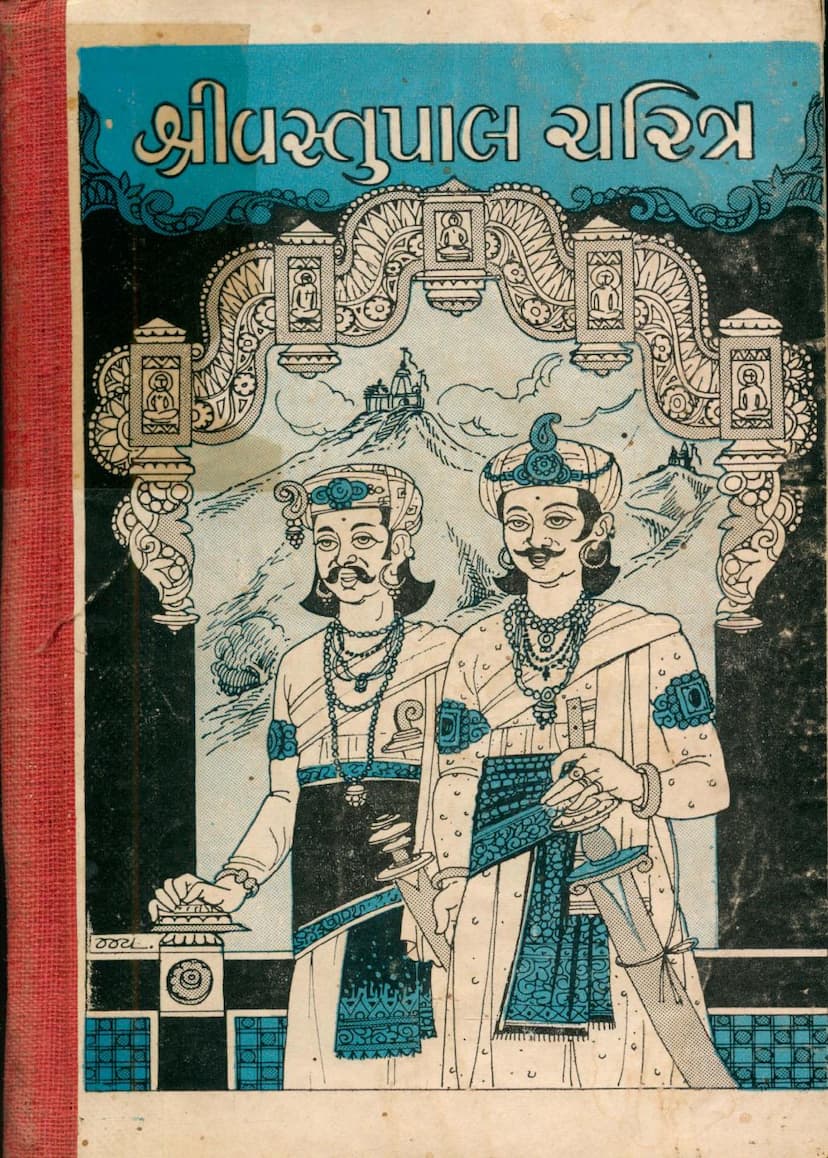Vastupal Charitra
Added to library: September 2, 2025

Summary
Here's a comprehensive summary of the provided Jain text, "Vastupal Charitra" by Mahodayvijay, published by Jain Prakashan Mandir, based on the extensive table of contents and introductory sections:
Overview:
"Vastupal Charitra" is a biographical account of the life and deeds of Vastupal, a prominent Jain minister and philanthropist. Authored by Mahodayvijay and published by Jain Prakashan Mandir, the text details Vastupal's rise to prominence, his significant contributions to Jainism through temple construction, charitable activities, and his unwavering devotion to the faith. The work is structured into several "Prastavas" (sections), each covering different phases and aspects of Vastupal's life and his brother Tejpal's involvement.
Key Themes and Narrative:
The "Vastupal Charitra" chronicles the life of a minister who, through his virtuous actions, divine inspiration, and unwavering faith, achieved remarkable success in both worldly affairs and spiritual pursuits. The narrative highlights:
- Divine Intervention and Guidance: The story begins with divine prophecies and guidance, such as the Shasan Devi's prophecy to Harshacharyacharya about the birth of virtuous sons, which influences the destiny of the characters.
- Vastupal and Tejpal's Virtuous Life: The text focuses on the exemplary lives of Vastupal and his brother Tejpal, emphasizing their righteousness, piety, and dedication to Jain principles.
- Political Acumen and Service: Vastupal and Tejpal rose to ministerial positions under the Chalukya kings, demonstrating remarkable administrative skills, wisdom, and loyalty. They navigated political challenges and served the kingdom effectively.
- Devotion to Jainism: A significant portion of the narrative is dedicated to their immense contributions to Jainism. This includes:
- Temple Construction and Renovation: They are credited with building and renovating numerous temples, most notably the magnificent temples on Mount Shatrunjaya and Girnar, described as awe-inspiring and surpassing even celestial abodes.
- Charitable Activities: Vastupal and Tejpal were renowned for their generosity. They established dharamshalas (charitable rest houses), provided food and sustenance to the needy, supported the ascetics, and performed numerous other acts of charity, expending vast sums of money for the welfare of the community and the propagation of Jainism.
- Pilgrimages: The charitra details their extensive pilgrimages to sacred Jain sites, highlighting their deep devotion and the spiritual merit gained through these journeys.
- Overcoming Adversity: The narrative also touches upon the challenges faced by Vastupal, including political machinations, envy, and the natural impediments that arise in fulfilling noble tasks. However, through his righteousness and the blessings of the divine, he overcame these obstacles.
- Moral and Spiritual Teachings: The text interweaves moral and spiritual lessons, emphasizing the importance of faith, righteousness, charity, humility, and the ultimate goal of liberation (moksha). The teachings of various gurus and saints are incorporated, guiding the ministers towards spiritual enlightenment.
- The Power of Good Deeds: The charitra consistently demonstrates the principle that virtuous actions and devotion to Dharma lead to prosperity, respect, and ultimately, spiritual upliftment. The story of King Bharat is recounted as an example of the immense benefits derived from selfless charity.
- The Ideal Minister and King: Vastupal is presented as an ideal minister, serving his king and kingdom with wisdom, integrity, and unwavering faith. King Viradhaval is portrayed as a just ruler who recognizes and rewards Vastupal's contributions.
- End of Life and Legacy: The narrative concludes with Vastupal's peaceful demise and his attainment of the highest spiritual state, leaving behind a legacy of immense charitable works and a profound impact on the Jain faith. The text also mentions Tejpal's eventual spiritual journey and eventual liberation.
Structure and Content:
The book is organized into eight "Prastavas" (sections), each covering specific periods and themes:
- First Prastav: Covers the initial stages of Vastupal's life, his family background, marriage, and the beginning of his spiritual journey, including the inspiration for his great works.
- Second Prastav: Details Vastupal and Tejpal's rise to ministerial positions, their political achievements, their initial charitable activities, and significant pilgrimages.
- Third Prastav: Focuses on their administrative roles, the conquest of various regions, and their efforts to eliminate injustice and promote righteousness, including the defeat of King Ghogul.
- Fourth Prastav: Narrates their extensive pilgrimage to Shatrunjaya and Girnar, their interactions with various kings and rulers, their management of state affairs, and their further charitable endeavors.
- Fifth Prastav: Explores Vastupal's introspection on life, his encounters with spiritual masters, and the profound teachings on righteousness and virtue. It also highlights the story of King Naram and the importance of devotion.
- Sixth Prastav: Describes the immense scale of their charitable works, including the construction of numerous temples, the establishment of dharamshalas, and their support for the Jain monastic community. It also covers their interactions with various individuals and the blessings they received.
- Seventh Prastav: Continues the narrative of their extensive pilgrimage, their interactions with rulers like King Viradhaval and their efforts to promote Jainism. It also includes the story of King Bharat as an example of selfless charity.
- Eighth Prastav: Delves into specific philanthropic activities, the construction of grand temples like the Vimal Vasahi on Mount Abu, and further instances of their devotion and generosity. It concludes with Vastupal's final moments and spiritual journey.
Overall Significance:
"Vastupal Charitra" serves as an inspirational guide for devotees, showcasing the elevated ideals of a pious minister and the profound impact of unwavering faith and selfless service. It is a testament to the Jain principles of Dharma, Ahimsa, and charity, demonstrating how worldly success can be harmoniously integrated with spiritual advancement. The text emphasizes that true fulfillment lies in dedicating one's wealth and efforts towards the welfare of society and the propagation of spiritual values.